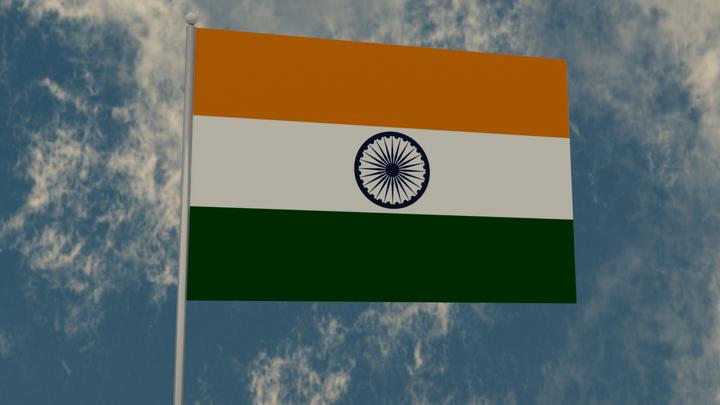Author: Prof. Engr. Zamir Ahmed Awan, Founding Chair GSRRA, Sinologist (ex-Diplomat), Editor, Analyst, and Non-Resident Fellow of CCG (Center for China and Globalization). (E-mail: awanzamir@yahoo.com).
Regional Peace is at risk as US and France deliberately creating an arms race in this part of the world. In a recent move, the US plan to share advanced defense and computing technology, including the potential joint production of General Electric Co. jet engines, to India, as the Biden administration seeks to shift New Delhi away from Russia and counter China. Details of the plan, known as the US–India Initiative on Critical and Emerging Technologies, released Tuesday bolster Washington’s broader agenda of strengthening the military, technology, and supply-chain links with partner countries like India.
India and the US are all set to advance their defense cooperation. In collaboration with the Defense Research and Development Organization (DRDO) and an unnamed private manufacturer of defense equipment, the Joe Biden administration has already given the green light for General Electric (GE), a world leader in military jet engines, to produce 98 kilo-newton thrust GE-F414 engines in India.
Both the Advanced Medium Combat Aircraft, which is now under construction and will have twin engines, and the LCA (Light Combat Aircraft) Mark II will be powered by the India-specific GE-414 INS6 engine, which will be introduced by Aeronautical Development Agency (ADA) early next year and enter service by the end of 2024.
The GE-414 engine will be produced under conditions that involve a complete transfer of technology (ToT). A high-level team of the Indian government, which is now in the US under the leadership of NSA (National Security Advisor) Ajit Doval, is anticipated to finalize the contract during their stay.
The 4.5 generation Mark II Tejas, which would replace the Mirage 2000 and MiG-29 aircraft and carry roughly 6.5 tons of missiles and munitions, will be powered by the GE-414 engine in place of the 4+ generation LCA Tejas Mark I’s GE-404 engine. A replacement for the MiG-21, the LAC Mark I can only carry 3.5 tons of missiles and ammunition and has half the operational range and warfighting capability of the Mark II. For the Indian Air Force, India intends to construct more than six squadrons (each squadron has 18 aircraft), and it also intends to export the fighter to other interested nations.
Along with GE engines, other essential and developing technologies covered by the project include semiconductors, quantum computing, artificial intelligence, armored infantry vehicles, and marine security. The initiative is also seen as the American administration’s move to veer New Delhi away from Russia and oppose China.
Earlier, France also assisted India in Defense. France and India have signed an agreement to cooperate on air-independent propulsion (AIP) technology to upgrade the latter’s Kalvari-class submarines, deepening the growing strategic relationship between the two countries. AIP technology allows conventional submarines to stay submerged for weeks at a time, approaching the underwater endurance of nuclear submarines.
This month, Indian Express reported that Naval Group France and India’s Defense Research and Development Organization (DRDO) had signed an agreement to develop fuel cell AIP to be retrofitted on the first-of-class INS Kalvari, a derivative of the French Scorpene-class submarine.
The report cites a DRDO statement that says senior officials of DRDO New Materials Research Laboratory (NMRL) and Naval Group signed the agreement to extend cooperation for the detailed design phase of integrating India’s indigenous AIP into the INS Kalvari, with Naval Group certifying the integration. The report did not mention specifics about the AIP’s performance but did say it is unique in generating hydrogen onboard instead of storing it aboard in liquid form. India’s new AIP system is most likely derived from Naval Group’s Fuel Cell Second Generation (FC2G) model, which cracks diesel fuel in a reformer to extract hydrogen, using liquid oxygen and nitrogen as oxidizers. When the hydrogen is mixed with oxygen, it generates electricity to charge the submarine’s batteries and produces water used in the cracking process.
Few Western Countries are up-grading Indian Defense. Earlier, India also got S-400 and some advanced weapons from Russia. Traditionally, India was dependent on Russian Defense systems but gradually enhanced its capabilities with the help of the US and EU.
With the sharp increase in Defense Budget, India has demonstrated the over-ambitions. India's foreign policy is to offend its neighbors and keep friendships with countries far away. This is part of their religion’s teaching and Hindu philosophy. India has a traditional rivalry with Pakistan and China. Also having trade, border, and territorial disputes with Bangladesh, Nepal, Bhutan, and Myanmar. Disputes with Sri Lanka and the Maldives are also very much obvious. India has spoiled its relations with all of its neighbors.
Indian intentions are very clear and a message to all its neighbors. There are serious concerns among all neighbors and it might initiate an arms race in the region. It seems there is a compulsion among the neighbors of India to unite and formulate a collective policy to prevent Indian over ambitions. The West is blindly assisting India to counter China crazily, ignoring the consequences and endangering the whole region. The civilized world must follow a rational approach and keep balance among the regional countries. The excessive tilt toward India might be counterproductive and may harm geopolitics.
(ASIA PACIFIC DAILY)
